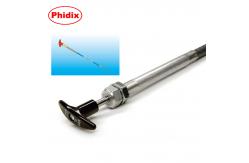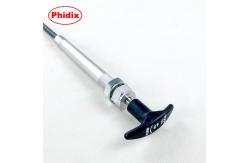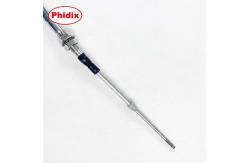twist lock vs button lock vs non lock cable guide
|
Why Control Head Type Matters More Than You ThinkWhen specifying a push-pull control cable, most engineers focus on stroke, core type, or output end. But there's one choice that quietly determines user safety, operational stability, and ergonomic feel: The control head locking mechanism. Should you go with a Twist-Lock? A Button Lock? Or just a Non-Lock cable? Each mechanism serves a different purpose. In this guide, we break down the key differences so you can match the right structure to your application—whether it’s for a PTO, throttle, hydraulic valve, or engine shut-off system. 1. Twist-Lock Control Head: Reliable Hold in Vibrating SystemsKey Characteristics: • Locking achieved by quarter-turn of the T-handle • Holds position under vibration, mechanical load, or slope • Requires manual twist to unlock—intentional release only Best Used In: • PTO engagement on agricultural and industrial vehicles • Choke control on cold-start diesel engines • Hydraulic valve positioning on construction equipment Pros: • Excellent vibration resistance • Easy tactile feedback • No need for spring-loaded components Consider: Requires manual twist every time—ideal for settings that remain fixed during operation. 2. Button Lock Control Head: Fast Lock, Fast ReleaseKey Characteristics: • Push button engages/disengages locking pin • Allows quick adjustment and relocking • Common in heavy equipment and industrial panels Best Used In: • Repetitive throttle adjustments • Operator console panels • Parking brake levers Pros: • Fast lock/unlock cycles • Clear detent action for confirmation • Compatible with glove operation Consider: Slightly more complex structure; spring mechanism may wear over time in harsh environments. 3. Non-Locking Control Head: Simplest, for Momentary ControlKey Characteristics: • No integrated locking mechanism • Control returns based on load or friction • Lightest and lowest-cost option Best Used In: • Temporary actuation (e.g., choke pull only during start) • Environments with low vibration or no critical hold requirement Pros: • Lightweight and compact • Cost-effective for short-duration control Consider: Not suitable where constant position retention is needed. Comparison Chart
How to Choose for Your System
Phidix Offers All Three—But Twist-Lock Leads for SafetyAt Phidix, we manufacture all three locking styles to suit different customer needs—but for environments involving vibration, safety-critical control, or fixed-setting applications, our engineering team consistently recommends Twist-Lock control heads. Explore the Phidix Twist-Lock Cable Series or reach out to configure your custom locking control solution. |
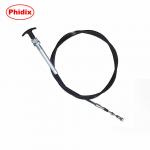
|
Twist Lock Control Cable Push Pull Self Locking T-Handle Parking Brake Cable |
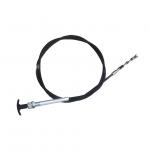
|
Control Cable Assembly With Twist Locking Handle 96" Long Black |
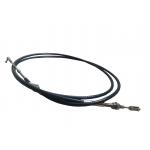
|
Control Cable Push-Pull Throttle Cable |
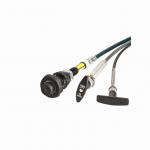
|
PVC PE Mechanical Control Cable PTO Push Pull Cable Assembly Custom |
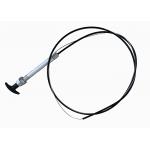
|
IATF16949 1500MM Mechanical Control Cable With Black Twist Lock T-Handle |
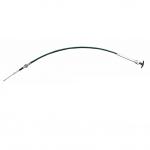
|
VLD Cable Assembly, Remote Pull Cable Kit With Twist Lock Handle |

